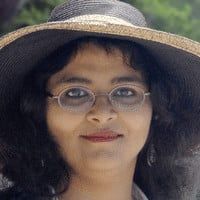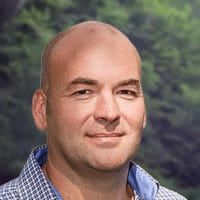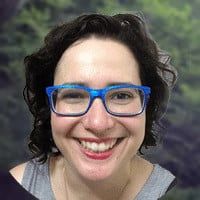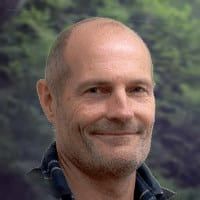Lysanne Snijders

Leibniz Institute of Freshwater Ecology and Inland Fisheries, Germany
Observing animal behaviour can tell us a lot about evolutional behaviour. It can also be an invaluable practical knowledge if you are working with farm animals. But, there is more to it than just raw data. Lysanne Snijders, from the Leibniz Institute of Freshwater Ecology and Inland Fisheries, has discovered something much more interesting. She’s found, that not only do birds have personalities, but that there are whole social networks between these animals. They love, they hate, they cheat, and they take care of each other.
Find out more about Lysanne’s search for the personality of animals in our new video.

Lysanne: My name is Lysanne Snijders. I’m an academic researcher interested in Animal behavior. I’m very interested in animal social behavior and animal spatial behavior. I’ve been studying migration in geese and I just did my Ph.D. on the social networks of Great Tits or small song birds.
Nerina: Why are you so passionate about animal behavior?
Lysanne: Well, actually, I don’t really know. I’ve always been passionate about animal behavior. I really like observing animals. I think it broadens your world if you are aware of all the animals that always are around you and how they behave and why they behave the way they do. That’s why I also became a biologist because I was observing animals anyway, so I might as well make a profession out of it.
Nerina: Why is it relevant to know about animal behavior, in your opinion?
Lysanne: Well, there are several reasons. They can tell us more about the evolution of behavior in general, but also it can be very practical if you’re working with farm animals, to know what causes stress, what is the ideal social situation. It can be very relevant if you are working with threatened populations to know what are the risks, what is their behavior, how do they respond to stressors. But for me, it is relevant because I think we live with a lot of animals on this world and we’re often not even aware of them. And the more you learn about them, themore you learn about their behavior, the more you realize that they’re actually not so different from us and that maybe in some cases, we should also treat them a bit different than we do now. That’s why for me, personally, studying animal behavior is very relevant.
Nerina: You work on birds, more specifically on Great Tits. How do you research them?
Lysanne: There are actually two main methods with Great Tits. For my Ph.D., I worked with captive Great Tits. We brought them in captivity and we keep them in aviaries so we can do behavioral experiments with them, but we also work with wild birds. We have a number of nest box populations. In the forest, we hang up a lot of nest boxes, like 200 of them. Great Tits really like to breed in nest boxes and also to sleep in nest boxes in the winter, so you can easily check on them. They put collar rings and aluminum rings on them so we can identify and we can keep track of the individuals. This way, we can study the behavior, spatial behavior and breeding behavior of these individuals in the wild also.
Nerina: This is also my question. Do birds have a personality?
Lysanne: Yes. Yeah, that has actually been a topic of my latest studies. A lot of animals, almost all species actually, has been discovered in recent years, that you really see differences between individuals of the same species. Individuals react differently to the same situation as other individuals do. If you put them in the same situation again, you will the same differences. For Great Tits, for instance, we use a number of environments tests. We place them in a new room, which is a bit of a stressful situation and we study how they react to this stressful situation. We see that some individuals, will just go out and explore the whole room, being a bit adventurous, while others actually are quite a bit stressed and scared and they will just stay in one place and wait for the test to be over. That makes it very fascinating for me because you see these differences that you will also see with people if you put them in a stressful situation. Some are quite comfortable with stress and others just get sort of paralyzed by it.
Nerina: Your Ph.D. was about social networks of birds. Could you tell me more about it?
Lysanne: The interesting thing with looking at social networks, is that you’ll realize that a lot of these individuals, these birds, are connected to each other directly because they are just close to each other or indirectly because they’re singing to each other from far away. These Great Tits, for instance, they form monogamous pairs, so they form social pairs, that usually stay together for their life. It doesn’t mean that they don’t cheat… If you look at offspring, you will sometimes find that there are also some offsprings, some chicks that are not from the partner of the female. These are also interesting relationships going on. You don’t really see it.
Then with Great Tits, what’s also interesting is that in the spring and in the summer, they have these territories. They defend the territories also by singing. Both the male and the female defend it. They use this territory to raise their family. When the kids fledge, they will move around the territory and also further away exploring the area, but as soon as it gets cold, and it really gets really cold, they all go into flocks. Not only the Great Tits, also the Blue Tits will move in. They form one big group of birds and they will move around the forest and also in the gardens of people looking for food. They change their social behavior also depending on the time of the year.
Nerina: Why do birds sing?
Lysanne: That’s actually a very crucial question in animal behavior. There are two main answers that can both be true. One is to keep competitors at a distance. Especially in Great Tits it has been proven that if you remove the Great Tit from its territory but you keep playing the song of this Great Tits, it will take a long time before another bird takes over the territory. But if you do not do that, if you just keep silence, then really quickly, another bird will move in. They use the use to say, “Hey, I’m here. Keep away.” But also song is very important to attract females. There’s a lot of information in how birds sing. Sings that you can tell something about how the body condition of this bird is, how the quality is, how big the bird is and how much more energy it has, how much more vigorously it can sing, and females can use this information also to learn something about this potential partner and base their choice for mates also on this song.
Nerina: Can you recognize a bird from its personality?
Lysanne: Yes, for some you can really recognize from the behavior. For instance, in a nest box population with Great Tits, every year we do nest box checks to see how far they are with breeding, and then you will notice that for some birds, even if you’re just approaching the nest box, they cannot see you but they hear you, and you’ll already hear like a hissing sound and a lot of noise coming from the box, and then it’s a female trying to scare you away by… That was a different hypothesis, but maybe they’re pretending to be a snake, chasing away predators. Not all females do this. At some point, you’ll get to notice this box with this female again.
Nerina: What do we know about the relationship with each other?
Still a lot of research is being done. Until now, it has been very difficult to really track these bird every day or every minute of the day. Now we get new technology, really small little transmitters, and we can really track these birds and with whom they stay together. With Great Tits, it seems that they already, in their first winter – they get born at the end of spring – in the winter, they mate up so they don’t mate, but they get a partner in this winter flocks. They stay together and they try and raise their first broods. You will see, if it doesn’t work, then sometimes they will try and find a new partner, but if they succeed, they usually stay together. They will stay together throughout winter and throughout the summer. Just the whole year around.
Nerina: What does it mean that it doesn’t work? For people, I know what it means when it doesn’t work but what does it mean for two birds?
Lysanne: Colleagues of mine are really looking into that, like what is the value of compatibility, how important is that in birds. The problem is a bit when a male and a female are taking care of a nest, both individuals have an interest when the other would do more. If you can just do less and the other one does all the work, that’s good for you because you lose less energy and so your chicks will survive, but both individuals have this motivation for the other maybe to do less. At some point, if one of the individuals for instance really says, “Okay, you do all the work,” then at some point maybe the partner will say, “Okay, now I’ve had enough,” and goes away and tries to find a new partner. These kinds of mechanisms can cause that these birds just don’t work together. They cannot find a good balance in how much they both take care of the chicks. Then it can go wrong and they try to find a partner that matches better.
Nerina: Are we affecting their habitat?
Lysanne: Great Tits are a bit of an exception because they, until now, have been very well in adapting to the human environments. You see them a lot in your backyards, but a lot of studies also show that the birds breeding in the cities actually do worse than the birds in the forest. If you look at the long-term, it’s probably not a good thing. But then you also have that most birds, most animals, they cannot adapt or not so quickly as we are increasing our infrastructure in our cities. They are pushed more and more into little areas, especially if you look at the Meadow-Birds for instance. The smaller the areas, the more risks there will be because it will be much easier for predators to find them. They will not only have a reduced area to find food but also increased the likelihood of being caught, being killed. There’s this extra stress so you see for many animals, that their populations are declining. Especially what we build and what we consume is an important factor. For a lot of people who live in the cities, it feels so far away what is happening in the rain forest for instance, but everything you buy, all the ingredients that are in your products come from somewhere. It’s important to, even if you’re not living in the rain forest, that your behavior, your choices, have an important impact on the habitats of these animals.
Nerina: What was the most unexpected experience you have had, watching birds?
Lysanne: The most unexpected one and that was not so nice actually, was when we were doing the nest box checks. I was doing them for one of the first times. I came to a nest box and I opened it and there was a dead Blue Tits in there. Then I went to the next nest box and again, there was a dead Blue Tits in there. Then I learned that these nice Great Tits, my study species, can actually be quite mean, killing machines also. When they chose a nest box and then they find that another bird is inspecting this nest box, because a lot of birds are looking for a nesting place, I guess it turns red for their eyes and they just attack these birds in the nest box. Great Tits are quite strong. They are bigger and stronger than Blue Tits. These Blue Tits, they’ll lose and they will kill the birds. It’s not only that they’re really cute little social birds. They also have a little bit of a mean side.
Nerina: What is the most important lesson that you have learned from your Ph.D.?
Lysanne: Of course, before I started with my Ph.D., I didn’t know so much about animal personality yet. I actually found it a bit of a difficult topic. It sounded very subjective. In biology, they use the term anthropomorphism. Attributing human characteristics to animals. I felt a bit critical about it, but them working with these birds, doing these personality tests and following these birds year round, I really also just saw and was convinced that they are very different. This personality thing is really something real. I think that was the most important thing, what I learned from my Ph.D., that you really have distinct individual animals.
Nerina: What is next? What would you like to work on?
I think bats are one of these creatures that they are so many of them. One fifth of all the mammal species is actually a bat, and we know almost nothing about them. Especially compared to birds. From birds, we’ve learned quite a lot about their migration strategies and their ecology, and bats, we know very little. I want to investigate their migration strategy. Some bats, they stay in one place the whole year, while others make this really long distance flight with all these risks. So why do they do this? Then I’ll look at do they differ in their personalities also, do they differ in their social behavior, to learn more about these animals we know so little about, and to also share this information so we can better protect them in the future.
Nerina: What is the question nobody ever asked you but you wish they would?
Lysanne: About how we, as people, can take better care of our animals. How can we take their behavior into account, to improve their well-being? Yeah. How can we make people aware that we are not the only important species on this planet? I think that, for me, is a very important question. I think in science, we know a lot. Especially if you now look at this climate change debates, there’s at least 97% of scientists that say that this is really happening, this is really a problem, and still, there are people that just seem to think that it’s still up for debate. That it might not be happening. For me, it’s important to know how can scientists communicate better to the general audience and make our research clear. Not that it’s just another opinion, but it’s objective measurements about how the world is very likely to work. I think that’s not only for me but for many scientists, that’s a very important topic and important question. How can we bring our knowledge across and how can we have people really trust our findings and our results? What do we need? What does research need in order to be able to communicate better?
Nerina: What do we need? What does research need in order to be able to communicate better?
Lysanne: I think there needs to be, also for scientists, more opportunities and more positive reinforcement of them communicating with the public. At the moment, especially academic scientists, are mostly valued for the scientific publications they make and the grants they bring in, but not so much about how they communicate their knowledge to the general public, which is a bit weird for me because, in the end, it’s all about impact. We tend to measure impact by where you published your research, in which journal and how much it gets cited, just because it’s easy to measure; it’s quantitative. But this is not the only impact and certainly not the only important impact we can make. I think there should be much more positive reinforcement for scientists to tell their story and to bring this knowledge across. More stimulation, more positive reinforcements from higher up, the people who distribute the money, I think would be very valuable.
Nerina: Do you have a dream or a wish for the future?
Lysanne: My wish for the future would be what we already talked about a bit also, is that people really start recognizing that all these animals have individual personalities, and especially also regarding production animals like the chickens and the pigs and the cows, to really realize that these are all individuals with feelings, with stress, with emotions, especially with pigs, which are also very intelligent animals. They are equal or even more intelligent than dogs. That we just should not turn away because it’s easier not to think about it, but that we should really realize how we are treating them.
Nerina: Thank you so much for this conversation.
Lysanne: Yeah. Very nice. Thank you for these interesting questions.
Leibniz Institute of Freshwater Ecology and Inland Fisheries, Germany












